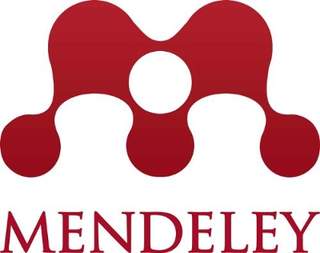FOREST REFERENCE EMISSION LEVEL FOR MANGROVE FOREST IN MAHAKAM DELTA
Abstract
Forest Reference Emission Level (FREL) is one of four required elements for developing countries in implementing REDD+ activities, and serves as a benchmark in assessing REDD+ performance. This study assessed the emission level from mangrove deforestation in Mahakam Delta - East Kalimantan, aiming to enhance the baseline for subnational FREL document. Over the observation period of 1980-2001, conversion of mangrove forest into aquaculture ponds has resulted in a massive mangrove loss, with an estimation of 3,183 hectare/year, or equivalent to the release of 0.46 Tg CO2e/year. If soil pool was also included in the calculation, mangrove deforestation in Mahakam Delta between 1980 and 2001 emitted 2.9 TgCO2e/year. The CO2 emission from aquaculture ponds may couple with mangrove deforestation, which released 52 Gg CO2 /year from the pond floor. After 2001, the rate of mangrove deforestation decreased, allowing mangrove forests to recover with the expansion rate of 1,546 hectare/ year during 2001-2011 or equivalent to the carbon sequestration or removal of 0.67-4.7 TgCO2e/year. The results of the study suggest the way to improve the existing FREL by raising the importance of mangrove as “blue” carbon, with reference of the 2013 IPCC Guideline: Wetland Supplement.
Keywords
Full Text:
PDFReferences
Allen, G.P., Laurier, D., and Thouvenin, J., 1979. Etude sedimentologique du Delta de la Mahakam. Notes et Memoires, TOTAL. Companie Franqaise des Petroles no 15, 156 pp.
Alongi, D. M. (2012). Carbon sequestration in mangrove forests. Carbon Management, 3(3), 313–322. http://doi.org/10.4155/cmt.12.20
Alongi, D. M. (2014). Carbon cycling and storage in mangrove forests. Annual Review of Marine Science, 6, 195–219. http://doi.org/10.1146/ annurev-marine-010213-135020
Alongi, D. M., Murdiyarso, D., Fourqurean, J. W., Kauffman, J. B., Hutahaean, A., Crooks, S., … Wagey, T. (2016). Indonesia’s blue carbon: A globally significant and vulnerable sink for seagrass and mangrove carbon. Wetlands Ecology and Management, 24(1), 3–13. http:// doi.org/10.1007/s11273-015-9446-y
Boisvilliers, M. De. (2014). Natural and anthropogenic processes of mangrove regeneration inside aquaculture ponds in the Mahakam Delta, Indonesia. Montpellier [France]: AgroParisTech
Bosma, R., Sidik, A. S., van Zwieten, P., Aditya, A., & Visser, L. (2012). Challenges of a transition to a sustainably managed shrimp culture agro-ecosystem in the Mahakam Delta, East Kalimantan, Indonesia. Wetlands Ecology and Management, 20(2), 89–99. http://doi. org/10.1007/s11273-011-9244-0
Dutrieux, E., Proisy, C., Fromard, F., Walcker, R., Liman, M., Pawlowski, F., … Ponthieux, O. (2014, March). Mangrove restoration in the vicinity of oil and gas facilities: Lessons learned from a large scale project. Paper presented in Society of Petroleum EngineersSPE International Conference on Health, Safety and Environment. Long Beach, United States: SPE International (Vol. 2, pp. 1103– 1120). http://doi.org/10.1007/s11273-0119244-0
Giri, C., Ochieng, E., Tieszen, L. L., Zhu, Z., Singh, A., Loveland, T., … Duke,
N. (2011). Status and distribution of mangrove forests of the world using earth observation satellite data. Global Ecology and Biogeography, 20(1), 154–159. http://doi.org/10.1111/j.14668238.2010.00584.x
Howard, J., Hoyt, S., Isensee, K., Pidgeon, E., & Telszewski, M. (Eds.). (2014). Coastal blue carbon. Methods for assessing carbon stocks and emissions factors in mangroves, tidal salt marshes, and seagrass meadows. Arlington, Virginia: Conservation International, Intergovernmental Oceanographic Commission of UNESCO, International Union for Conservation of Nature.
IPCC. (2006). IPCC guidelines for national greenhouse gas inventories; Pre pared by the national greenhouse gas inventories programme. (H. Eggleston, L. Buendia, K. Miwa, T. Ngara, & K. Tanabe, Eds.). Hayama: Institute for Global Environmental Strategies Japan.
IPCC. (2014). 2013 supplement to the 2006 IPCC guidelines for national greenhouse gas inventories: Wetlands. (T. Hiraishi, T. Krug, K. Tanabe, N. Srivastava, J. Baasansuren, M. Fukuda, & T. G. Troxler, Eds.). Switzerland: IPCC.
Kauffman, J. B., Heider, C., Norfolk, J., & Payton, F. (2014). Carbon stocks of intact mangroves and carbon emissions arising from their conversion in the Dominican Republic. Ecological Applications, 24(3), 518–527.
KLH. (2012). Pedoman penyelenggaraan inventarisasi gas rumah kaca nasional. (R. Boer, R. G. Dewi, U. W. Siagian, M. Ardiansyah, E. Surmaini, D. M. Ridha, … R. Parinderati., Eds.). Jakarta: Kementerian Lingkungan Hidup.
KLHK. (2016). Statistik Kementerian Lingkungan Hidup dan Kehutanan 2015. Jakarta: KLHK
Lovelock, C. E., Ruess, R. W., & Feller, I. C. (2011). CO2 efflux from cleared mangrove peat. PloS One, 6(6), e21279. http://doi.org/10.1371/ journal.pone.0021279
MEF. (2016). National forest reference emission level for deforestation and forest degradation: In the context of decision 1/CP.16 para 70 UNFCCC (Encourages developing country parties to contribute to mitigation actions in the forest sector). Jakarta: MEF.
Murdiyarso, D., Purbopuspito, J., Kauffman, J. B., Warren, M. W., Sasmito, S. D., Donato, D. C., … Kurnianto, S. (2015). The potential of Indonesian mangrove forests for global climate change mitigation. Nature Climate Change, 5(12), 1089–1092. http://doi. org/10.1038/nclimate2734
Pendleton, L., Donato, D. C., Murray, B. C., Crooks, S., Jenkins, W. A., Sifleet, S., … Baldera, A. (2012). Estimating global “blue carbon” emissions from conversion and degradation of vegetated coastal ecosystems. PloS One, 7(9). http://doi.org/10.1371/journal.pone.0043542
Persoon, G. A., & Simarmata, R. (2014). Undoing “marginality”: The islands of the Mahakam Delta, East Kalimantan (Indonesia). Journal of Marine and Island Cultures, 3(2), 43–53. http://doi.org/10.1016/j.imic.2014.11.002
Richards, D. R., & Friess, D. A. (2015). Rates and drivers of mangrove deforestation in Southeast Asia, 2000–2012. Proceedings of the National Academy of Sciences, 201510272. http://doi. org/10.1073/pnas.1510272113
Sidik, F., & Lovelock, C. E. (2013). CO2 Efflux from Shrimp Ponds in Indonesia. PLoS ONE, 8(6).
DOI: https://doi.org/10.20886/jakk.2017.14.2.93-104
Copyright (c) 2017 Jurnal Analisis Kebijakan Kehutanan

This work is licensed under a Creative Commons Attribution-NonCommercial-ShareAlike 4.0 International License.




